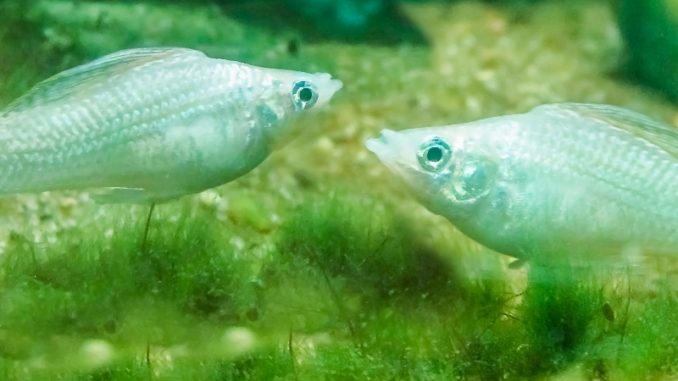
Do molly fish mate? That’s a question that all pet fish enthusiasts want to know. Whether you’re looking for some fun in the tank or trying to expand your aquarium, understanding how and when mollies mate is essential. There are many different types of Molly Fish, each with their own needs and preferences when it comes to mating – so let’s dive into this topic. Before breeding Mollies, there are certain steps you must take to ensure success; once everything is ready we can discuss the actual breeding process itself. Do molly fish mate? Let’s find out together.
Table of Contents:
Types of Molly Fish
Mollies are a popular type of fish that can be found in many aquariums. They come in a variety of colors and sizes, making them an attractive addition to any tank. There are several different types of molly fish available, each with its own unique characteristics.
Common Types of Molly Fish:
Mollies come in a range of shapes and sizes, from the small Sailfin Molly to the larger Lyretail Molly. Common varieties include Black Mollies, Dalmatian Mollies, Balloon Mollies, Gold Dust Mollies and more. Each type has its own distinct coloration and patterning that makes it stand out from other species.
Differences Between Male and Female Mollies:
The most obvious difference between male and female molly fish is their size; males tend to be smaller than females. Males also have longer fins than females do, which can help distinguish them when breeding or looking for mates in the wild. Additionally, males often display brighter colors than females due to increased levels of testosterone during mating season.
Breeding molly fish is relatively easy as long as they have plenty of space and clean water conditions are maintained regularly throughout the process. Females will lay eggs on flat surfaces such as rocks or plants while males fertilize them externally by releasing sperm into the water column near where she lays her eggs. Once hatched, fry should be separated from adults until they reach adulthood themselves since adult molly fish may eat their young if given the opportunity.
Preparing for Breeding Mollies
Setting Up the Tank:
When preparing to breed mollies, it is important to set up the tank correctly. The tank should be at least 20 gallons in size and have a filtration system that can handle the additional waste from breeding fish. It should also include plenty of hiding places for both males and females, as well as live plants or other decorations that will provide cover for fry once they are born.
Feeding the Fish:
Before introducing male and female mollies into the same tank, it is important to make sure they are getting enough food. Mollies need a high-quality flake food supplemented with frozen foods such as brine shrimp or bloodworms. Feeding them several times per day will help ensure they get all of their nutritional needs met before breeding begins.
Once you have established a healthy diet for your mollies, you can begin introducing them into the same tank together. Make sure there are plenty of hiding places available so each fish has its own space if needed. You may want to add some floating plants or driftwood pieces which can act as dividers between territories if necessary. If done correctly, this process should not take more than a few days before mating occurs naturally between two compatible fish.
The Breeding Process
Courtship Behavior:
Molly fish typically display courtship behavior before spawning. This includes the male chasing the female, flaring their fins and swimming around each other in circles. The males will also sometimes nip at the females’ fins to encourage her to lay eggs.
Spawning and Egg Laying:
When ready, the female molly will release her eggs which are then fertilized by the male. The eggs usually sink to the bottom of the tank or stick to plants or decorations where they can be easily seen as small white dots. It is important that you remove any adult fish from this area so that they do not eat them.
Once hatched, it is important to provide plenty of food for your fry such as newly hatched brine shrimp or finely crushed flakes specifically designed for baby fish. You should also keep an eye on water quality and make sure there are no predators in your tank that could harm your fry.
Conclusion
In conclusion, do molly fish mate? Yes, they do. Mollies are a great choice for pet fish enthusiasts looking to breed their own species. With the right preparation and environment, you can have a successful breeding experience with your mollies. Remember that different types of molly fish require different levels of care and attention when it comes to mating. Be sure to research each type thoroughly before attempting to breed them in order to ensure the best possible outcome for both the parents and offspring.
Are you looking for a way to keep your pet molly fish happy and healthy? If so, it is important to understand the mating process of these beautiful creatures. By understanding how they mate, you can provide them with the best environment possible and ensure that their needs are met. With proper care, mollies can live long lives in captivity! So take some time to research on how do molly fish mate and give your beloved pets the love they deserve.

Be the first to comment